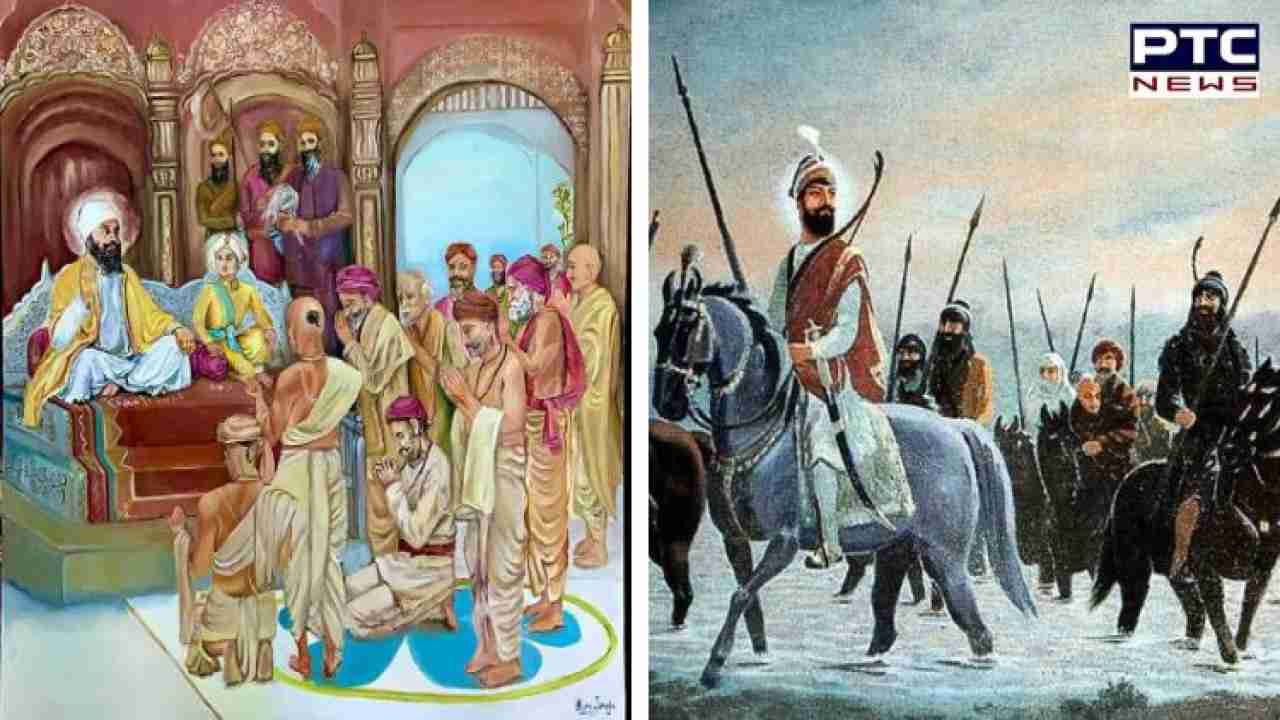

Safar-E-Shahadat Part 1: From residing in Sri Anandpur Sahib to leaving Anandgarh Fort | Watch Video
PTC Web Desk: In the rich tapestry of Sikh history, the genesis of Anandpur Sahib dates back to 1665, when revered Guru Tegh Bahadur Sahib Ji laid its foundation stone. The town emerged from the humble village of Makhoval, acquired by Guru Sahib from the Rajput state of Bilaspur, known then as 'Kahlur'.
Initially named Chakk Nanaki as a tribute to Guru Tegh Bahadur Sahib's mother, this fledgling settlement swiftly evolved into a thriving city, drawing devotees from Punjab and beyond. Guru Ji's arrival transformed it into a vibrant centre of spirituality. In 1675, his selfless act to protect the rights of Kashmiri pandits led to his sacrificial journey to Delhi, where he faced martyrdom.
_7b313468e3759bcd9845022f7b2e938b_1280X720.webp)
During Guru Ji's absence, young Gobind Rai, nurtured in Chakk Nanaki, matured under the guardianship of a Sikh brother named Jaita. Known for his valor and regal demeanor, Gobind Rai garnered admiration and forged alliances with neighbouring states. Erecting forts around Anandpur Sahib, he fortified the city against potential attacks.
The pivotal moment arrived on Vaisakhi in 1699 when Guru Gobind Singh Ji fulfilled his life's purpose by inaugurating Khalsa. This act stirred both awe and fear among ruling powers, leading to a coalition's siege on Anandpur Sahib. In the ensuing turmoil, Sikh devotees displayed unwavering courage, with some attaining martyrdom and others dispersing across the river Sirsa, while Guru Sahib's family split into distinct groups.
_392296261ec5ac9d1d8d0d11647c15bd_1280X720.webp)
_7448b51b2640ebeaf11607447e2e1034_1280X720.webp)
This saga of sacrifice, resilience, and the birth of the Khalsa at Anandpur Sahib marks a crucial chapter in Sikh history, an emblem of unwavering faith and valor.
_95bba34f46a8c27e1ff3a6ef349c4be2_1280X720.webp)
Stay tuned for continuation of this gripping narrative in the next part of Safar-E-Shahadat
- PTC NEWS
